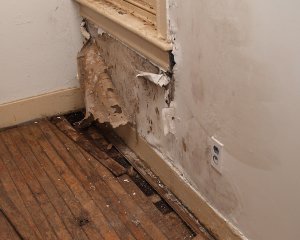Tackling the Six Most Common Water Leaks: Tips for Homeowners
Tackling the Six Most Common Water Leaks: Tips for Homeowners
Blog Article
In this article in the next paragraph you can get some extremely good details related to How Fast Water Damage Can Ruin Your Home.

Leakages not only cause waste of water but can also create unnecessary damage to your home and also advertise undesirable organic growth. Water leaks might go unnoticed because most of the pipework in our residence is concealed. By looking and recognizing for everyday scenarios that create leaks, you can protect your residence from future leakages and unneeded damage. Today, we will certainly check out six leak creates that may be causing your pipelines to leak.
Instantaneous temperature level adjustments.
Extreme temperature level changes in our pipes can cause them to expand as well as contract suddenly. This development and tightening may create cracks in the pipelines, especially if the temperature level are below cold.
Corroded water systems
As time goes by, your plumbing system ages and rust such as corrosion may start gnawing the pipes. This might be the root cause of staining or warping on your water pipes. This requires an inspection with your plumber promptly. Think about changing the pipelines since they are at a higher danger of rust than the more recent versions if our plumbing system is old.
Malfunctioning Pipeline Joints
The factor at which your pipes link is often the weakest web link in the waterline. Pipeline joints can wear away gradually, causing water leakages. Unfortunately, most of pipe joints are not conveniently visible. If you have noisy pipes that make ticking or banging sounds, especially when the hot water is turned on, your pipe joints are probably under a lot of pressure. It is suggested to have your plumber examine your system yearly.
Elbowing in origins
A lot of water leaks start outside your house as opposed to inside it. If you observe an unexpected reduction in water pressure, claim in your faucet, take some time to head out as well as examine your yard. You could see wet patches or sinkholes in your backyard, which may imply that tree roots are attacking water lines triggering water to seep out. You can have your plumber check for breach, especially if you have trees or shrubs near your residential or commercial property.
Poor Water Connectors
At times, a leak can be created by loosened hoses as well as pipes that provide your home appliances. In situation of a water connections leakage, you may discover water running directly from the supply line or pools around your appliances.
Obstructed Drains
Blocked drains pipes might be frustrating and also inconveniencing, yet they can often wind up creating an overflow bring about break pipelines. Keep eliminating any kind of materials that may drop your drains pipes that can clog them to prevent such troubles.
All the above are sources of leakages but not all water leakages result from plumbing leaks; some leaks may come from roof covering leaks. All leaks should be repaired immediately to avoid water damages.
Leaks not just cause waste of water but can additionally create unneeded damage to your residence and advertise undesirable natural growth. By understanding as well as looking for daily scenarios that create leaks, you can secure your residence from future leakages and also unneeded damages. Today, we will look at 6 leak triggers that might be creating your pipelines to trickle.
At times, a leak can be caused by loosened hose pipes as well as pipelines that provide your home appliances. In situation of a water connections leak, you may observe water running straight from the supply line or pools around your devices.
How To Check For Water Leak In Your Home
How To Check for Leaks
The average household's leaks can account for nearly 10,000 gallons of water wasted every year and ten percent of homes have leaks that waste 90 gallons or more per day. Common types of leaks found in the home are worn toilet flappers, dripping faucets, and other leaking valves. These types of leaks are often easy to fix, requiring only a few tools and hardware that can pay for themselves in water savings. Fixing easily corrected household water leaks can save homeowners about 10 percent on their water bills.
To check for leaks in your home, you first need to determine whether you're wasting water and then identify the source of the leak. Here are some tips for finding leaks:
Take a look at your water usage during a colder month, such as January or February. If a family of four exceeds 12,000 gallons per month, there are serious leaks.
Check your water meter before and after a two-hour period when no water is being used. If the meter changes at all, you probably have a leak.
Identify toilet leaks by placing a drop of food coloring in the toilet tank. If any color shows up in the bowl after 10 minutes, you have a leak. (Be sure to flush immediately after the experiment to avoid staining the tank.)
Examine faucet gaskets and pipe fittings for any water on the outside of the pipe to check for surface leaks.
Undetected water leaks can happen without the home or business owner even realizing. If you suspect a water leak, but not able to find the source. It is time to contact a professional water leak detection service, The Leak Doctor.
How To Find a Water Leak In Your Home
https://www.leakdoctor.com/blog/How-To-Check-For-Water-Leak-In-Your-Home_AE197.html

I hope you enjoyed reading our section on Most Common Causes of Leaky Pipes. Thanks a lot for taking the time to read our piece. Sharing is good. Who knows, you could be doing someone a favor. I praise you for your time. Kindly pay a visit to our website back soon.
Free Estimate Report this page